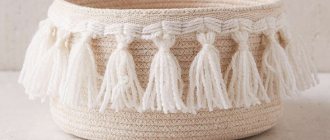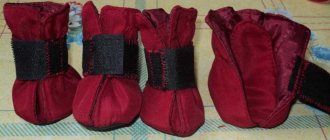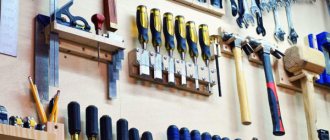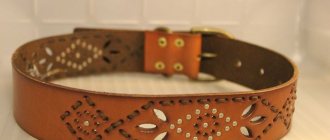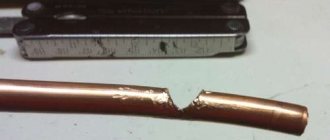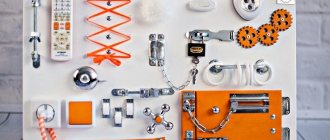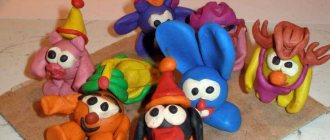A magnetic knife holder is a very convenient thing: it’s much easier to remove tools, and you can immediately see which knives are “free.” This, by the way, is not a very expensive pleasure, but it is much more pleasant to use something made with your own hands. We have prepared step-by-step instructions for making a magnetic knife board that will fit perfectly into the interior of your kitchen and will definitely please the eye. Let us immediately note that it is easy to do, so even if you have minimal skills in working with various tools and wood, you will succeed.
Stand material
Knife stands are made from a wide variety of materials: glass, iron, rubber, but the most common are wood and plastic. Each of them has its own advantages and disadvantages. The choice depends entirely on financial capabilities, the interior of the kitchen and the knives themselves.
Tree
Wooden stands are a classic option, found in two out of three kitchens. The material is ergonomic, environmentally friendly, compact, and will fit into any type of interior. These stands can accommodate a small number of knives – up to six pieces. It is convenient to store the most popular, working knives in them, which are used most often, so they will be at hand. As a rule, their design is such that the plane is located at an angle, this makes it possible to conveniently pull them out and put them back.
But wood has a significant drawback - it swells under the influence of falling drops of water. Accordingly, this also harms the blades. Another disadvantage of such stands is the inability to thoroughly clean the holes in the stands due to their narrowness. It is for this reason that bacteria can accumulate there. And also in such sets it is not visible which copy is located where, since they all have the same handles.
Plastic
Ceramic knives are usually stored in a plastic or polypropylene stand. To prevent their fragile blades from being injured, they should not be stored together with steel or other devices. A separate stand is required, plastic is best. In such models, silicone separators are most often used, since they do not harm the ceramic blades.
Famous brands of knife holders
There are several popular brands that produce magnetic holders, among which these stand out.
- Wuesthof. The company creates elegant ribbon coasters in dark or light shades. The length of the holders may vary. They are easy to attach to a vertical surface. The products of this manufacturer are not afraid of corrosion. Such products save space and have an elegant design.
- Forceberg. The device can securely hold even heavy and large objects. The products are made in a minimalist style, so they fit well into almost any interior. The base is made of plastic.
- MDG. The company produces magnetic holders, end and standard cutting boards, original interior items from valuable wood. A Russian manufacturer whose workshops are equipped with modern high-quality machines.
- Webber. The company creates holders for hygienic and safe storage of sharply sharpened knives. The design of the devices facilitates the storage of cutlery of any shape and size. The holders keep the blades sharp, which extends their service life. The product is attached to the cabinet door or wall.
- Samura. Small, stylish and ergonomic holders. The models are created from reliable and dense Hevea.
The material does not absorb moisture.
Magnetic holders will become an indispensable assistant in the cooking process.
Tips for choosing
When choosing knife holders, you should always pay attention to the main characteristics. Quality guarantee can only be provided in stores that have special certificates
If the purchase is not made in branded places, you need to pay attention to:
- product quality - there should be no backlash or creaks in the assembly;
- the strength of the magnets - the knives should hold normally, not weakly and not too tightly;
- length - for a branded product it cannot exceed 60 centimeters.
It is also worth remembering that magnetic strips for kitchen knives from well-known manufacturers are made from materials that are safe for health. This is confirmed by the presence of quality certificates provided in company stores. The most popular manufacturers are:
- Fissler;
- Hatamoto Japan;
- Nadoba;
- BergHOFF;
- Regent;
- WUESTHOF;
- Woodinhome.
Nadoba
BergHOFF
Regent
Woodinhome
How to choose?
When choosing a magnetic knife holder, be sure to pay attention to the main indicators of product quality. It would be ideal if the manufacturer provides a quality guarantee for its products
Usually this is done by expensive brands.
If there is no guarantee, then when assessing the quality of the magnetic holder you need to pay attention to the following characteristics
The blade material of your knives. Magnetic holders are only suitable for knives with a metal blade. Ceramic knives will not be attracted to a magnet. Being a full-fledged participant in kitchen design, the holder must fit perfectly into the interior in appearance and maintain the style of the room. The body of the product can be different: from simple plastic to mahogany. The same wooden holder is usually selected for a wooden set installed in the kitchen.
Select the length of the holder depending on the number of knives to be placed. Please note that the knives should not be attached closely to each other. It will be more aesthetically pleasing and hygienic if there is a small distance between them. In some cases, a combination of several planks may be necessary. This design looks professional and allows you to place a large number of devices.
The width of the holders can also be different. When choosing a wide holder, take into account the length of the blades of your knives, since the handle, once on the plate, will not allow the device to be fixed there.
Well-known manufacturers choose more environmentally friendly materials for holders that do not have the toxic smell of plastic
If you purchase a cheap version of a magnet, pay attention to how it smells, since a strong, unpleasant odor indicates that the product is made of harmful materials.
The attractive force of a magnet depends on its thickness. Therefore, if possible, be sure to evaluate this indicator
The optimal thickness of the magnets is 3-5 mm. Thinner plates are not able to fully hold heavy knives.
Tips for use
For safe use, holders should be hung out of the reach of children
Typically, the magnet is installed above one of the cutting tables at shoulder height. It is also important to securely fasten the magnet to the surface, since a fallen structure can injure nearby people. The danger is that not only the holder falls, but also the knives along with it. It is not recommended to install a magnet on the door, since the knives may fall when opening the cabinet
The movable surface, which at first glance can be used as a platform for a magnet, becomes quite dangerous when sharp objects are placed on it. The holder itself must be installed securely, using at least two fasteners. When choosing the type of fastenings, you should take into account the weight of the devices being placed. For example, knives with metal handles are much heavier than those with plastic handles, and the mount may not support such a massive structure.
Key holder with magnet and light
I like to do a lot of things myself and am constantly looking for various interesting master classes on the Internet. But there was one thing I was always missing due to my carelessness - a key holder. With it, I would always remember where my keys are, and not waste precious time looking for them: sometimes in the morning I spend 10 minutes trying to dig them out among other things.
I decided to make one myself, and one that would be easy to make, but the product itself would be unusual—too banal for me to buy. My choice fell on the option with a magnet and backlight.
Now I’ll tell you what materials I needed.
- Acrylic and MDF boards of irregular shape.
- Aerosol paint of any color.
- Black or any other paint - it depends on your taste.
- Screws and tools for woodworking.
- Three LEDs of any color.
- Three neodymium magnets.
- Three rheostats at 220 Ohm.
- An old mobile USB charging cable, the end of which has been cut off.
Step 1. Preparing for assembly
- Sand the surface of the MDF board using sandpaper.
- Make a cut to secure the acrylic sheet horizontally.
- Attach three neodymium magnets to the bottom of the acrylic sheet.
I didn’t need a lot of materials to make the key holder
Step 2. Connect acrylic sheet and MDF
- Drill two small holes in the acrylic sheet where the insert will be in the MDF board.
- Make three holes, the size of which is 0.5 mm each. LEDs will be placed in these holes at the back of the MDF board.
- Apply some wood glue inside the MDF board and insert the acrylic sheet.
- Tighten the two small screws on the back of the MDF board to secure it tightly.
Connecting two different materials requires glue and screws.
Step 3. Decoration
I decorated this key holder with several triangles and circles made from balsa wood. I subsequently attached them to an MDF board.
Step 4: Connecting the LEDs
- Insert three LEDs behind the MDF board with all their wires pointing down.
- Solder a wire connecting all the wires brought out from the light bulbs.
- Attach three 220 Ohm rheostats to the positive of each LED.
- Solder another wire connecting all the top wires to the rheostats.
- Connect the red wire from the USB cable to the wire with rheostats soldered at the top, and the black wire from the USB cable to the bottom common wire.
You need to understand exactly how to connect LEDs
Step 5: Protect the Wiring
- Cover the LEDs with insulating tape.
- Secure the loose USB cable to the MDF board with a stapler or glue gun.
- Attach some legs behind the MDF board to protect the wiring while attaching to the wall.
Installing wiring requires some technical knowledge
Step 6: Installation
After the entire procedure, all that remains is to attach the key holder to the wall. You can screw it on, or you can use double-sided tape - whichever is preferable to you.
Now you can attach the keys to the neodymium magnets located at the bottom of the acrylic sheet. They won't fall - the magnets are powerful enough to hold them.
In general, I have been using this holder for a long time, and it only makes me happy. It was easy to make, and the benefits it brings are simply countless.
This is the holder I ended up with:
Flange manufacturing
In order to connect the engine and the grindstone, it is necessary to grind a special flange. To do this, you can order the work of a turner by providing him with drawings of the sharpener, the dimensions of the shaft section and the diameter of the hole of the whetstone.
You also need to grind the following parts:
Drawing for making a flange for emery.
- flange placed on the shaft axis;
- bolt;
- screw;
- washer with left-hand thread.
The flange and nut must be threaded depending on which direction the engine rotates. If the shaft rotates clockwise, the cutting should be left-handed. If counterclockwise, the cutting is right-handed.
This is necessary so that during the processing of tools the emery nut can be tightened independently. If the nut becomes loose, the stone may fall. During operation, this is very dangerous for others.
If you were unable to make bushings of the required diameter, then you can use pieces of pipes of the same diameter. In this case, you can fill the gaps between the shaft and the bushings by winding fabric insulating tape.
The sleeve is made from a pipe with a diameter of 32 mm. It should correspond to the diameter of the emery circle. An emery wheel is placed on it so that it sits tightly.
This bushing system must fit tightly on the shaft. Be sure to secure it with a bolt and washer.
You can cut the thread yourself using a tap, to do this you need to clamp the shaft in a vice
It is important to correctly determine the hole diameter for a given thread.
Scheme of a homemade mini-emery machine.
Before you begin manufacturing the device, you need to clarify the direction of rotation of the rotor. For example, the motor from a washing machine is asynchronous. This means that the direction of rotation can be changed by switching the windings.
A washing machine motor usually has 3-4 leads. Thus, with 4 pins, the direction of rotation can be easily changed.
To do this, you need to use a tester to determine the working and starting windings. Most often, the resistance level of the working winding is 12 Ohms. The starting winding has a value of 30 ohms.
The working winding of the motor is connected to a power supply network with a power of 220 W. The starting winding is connected with the first end to the coil terminal, and with the other end it is necessary to quickly touch the second terminal and immediately tear it off from it. A relay is used for this operation.
If a capacitor motor is installed, the device connection diagram will be different.
This means that during operation the sharpener will rotate in a certain direction. If you then move the leads of the starting winding from place to place, the device will begin to rotate in the other direction.
You don't have to use a trigger coil. Then, after connecting the device to the network, you will need to turn the sharpening stone in the desired direction, after which the device will start working.
How to mount it straight to the wall
In order to properly hang the magnetic knife holder on the wall, you need to make preliminary marks evenly and accurately. To do this, you can use a regular or laser level, which will allow you to outline the horizontal placement. The distance between the magnet mounts is measured and the corresponding value is transferred to the wall.
The number of fasteners depends on the type and size of the holder. The most common design has two fasteners. They can be looped, located along the top of the bar, or hidden.
Very often, a magnetic holder is hung on a tile, since it is the tile that is used to decorate the work wall in the kitchen. Fastening is done using double-sided tape or using dowel nails. Usually the set of holders includes dowels and screws.
In order to securely and without destruction attach the magnet to the tile with dowel nails, you must be careful in your work. To do this, drilling is carried out in two stages:
- At the first stage, it is better to use a drill or screwdriver with a ceramic pen of the required diameter to drill the tiles.
- In the second stage, a hammer drill is used to make a hole in the wall itself.
A dowel is inserted into the finished hole, into which a nail is screwed or hammered.
Peculiarities
The key feature of a magnetic board is that this holder is one of the best for steel blades. This product can be purchased in almost any hardware department. In addition, the following points are worth noting:
- The holder can be hung on any surface using special glue or self-tapping screws.
- It is more practical when the blade hangs on a magnetic board for knives, rather than in a countertop or a special niche for kitchen utensils (spoons, forks).
- The device saves kitchen space and ensures safe storage.
- The knives do not become dull when they touch each other if they hang on a magnet.
No less important is that knives on a magnetic holder do not rust, since they need to be hung after wiping them with a dry towel. If you store tools in a cabinet or drawer with poor ventilation, the quality of the blade material may deteriorate due to humidity. It is better for the kitchen appliance to be stored in an open space, so the product will retain its original appearance longer (it will not darken or rust).
The magnetic holder is an indispensable item for cooks who love exquisite kitchen utensils. When buying an expensive set of Damascus steel blades, you definitely don’t want to hide this beauty in a wooden stand. It’s another matter when polished shiny steel flaunts on the wall and attracts the eye.
Fixing the board
The board is ready, all that remains is to fix it on the wall. To do this, we use hardware - we make holes in the wall, screw them in, and then hang the board behind them - for this we made special “notches” on the back side. Before screwing in hardware, make sure that there is no wiring in this section of the wall. Using a building level, check that the fasteners are at the same level.
Trying to attach a board to the wall in the kitchen
All is ready! We try to attach the knives - they hold perfectly. Remember that on one side we have more magnets, so it’s worth placing larger and heavier knives on it.
This is what the finished hanging board looks like, on which we have already attached the knives. The knife looks very nice
We are sure that such a magnetic board for knives is much better than a regular store-bought one, because it “has a soul” - it really pleases the eye when you look at what you have made with your own hands! Moreover, such a board can be made in just a few hours; no special knowledge or skills are required, so it’s definitely worth a try. We are sure that it will fit perfectly into the interior of your kitchen - natural wood always looks good.
Painting a wooden board
The first step is to coat the board with sealant. There is a large selection of protective products for wooden surfaces. You can choose the one that suits you best. Carefully read the instructions on the can; most likely, painting will need to be done in a well-ventilated area or in the fresh air.
So, take a lint-free cloth and apply the product to the surface of the board according to the instructions on the can. It is recommended that you wear gloves before you begin this process, otherwise you will paint your hands along with the wood. Allow the sealant you applied to dry thoroughly.
How to make a knife stand with your own hands
Of course, you can spend a lot of money, turn to a specialist and get a chic knife stand for your kitchen. You can choose a suitable product in any household goods store - the range today is simply huge. But creative people will be much more impressed by a DIY knife stand, which can become a bright accent in the interior. It’s not difficult to make, the main thing is to stock up on the necessary materials and strictly follow the instructions.
Wooden with holes
A classic knife holder found in many kitchens. The design is as simple as possible: a wooden box with recesses provided for the blade, while the handle remains outside. They have a long service life. Fits into almost any style of room.
It allows you to store up to 8 products at the same time. It is very convenient to remove the knives due to their placement at an angle. The main disadvantage is the difficulty of cleaning narrow recesses in which a large amount of debris accumulates.
Making such a holder yourself is a labor-intensive process and requires working with carpentry equipment; a drawing is required for a complex product.
Step-by-step manufacturing guide:
- Cut two side walls - with a curved edge, they will serve as a frame.
- Prepare 8 identical parts, make a notch on each of them: it should be 5 millimeters wider than the knife blade.
- Check that all grooves match.
- Seal each part with electrical tape along the edges of the grooves, and apply hot glue to the edges. Using this principle, glue the entire stand together.
- Sand the product until the surface is completely smooth.
- Cut out the holder for the scissors.
- Using a screwdriver, create fasteners on the back of the structure.
- Coat the finished product with varnish.
From old books
This method is distinguished by its originality and simplicity of creating a stand. All you need is a few thick books, which everyone has, and elastic bands for money or decorative ropes that will be used to fasten them.
Homemade knife stand from books. The main advantage is the speed of production and the absence of any investments. There are no special skills or tools required; all that is required is to firmly connect the books with each other.
The disadvantages include short-term operation. Over time, damaged pages will become very noticeable as sharp blades are constantly inserted and removed.
In human form
An interesting option is to make a holder for kitchen knives in the shape of a man with a shield and a spear. This stand will be a great addition to any kitchen. This method is suitable only for those who know how to cut shapes from plywood using a jigsaw.
You will need the following materials and tools:
- sandpaper;
- end mill;
- cutter for smoothing corners;
- pieces of plywood (60 x 30 x 1.6 cm, 47 x 33 x 1.6 cm, 37 x 33 x 1.6 cm, 27 x 33 x 1.6 cm);
- hot glue;
- 6 mm chops (9 pieces);
- varnish coating.
Step-by-step manufacturing instructions:
- Two men of the same shape are cut out of a piece of plywood, two identical shields that will be attached to the warrior’s hand, and two stable bases.
- The shields are placed one on top of the other, and the required number of holes for knives is made in them.
- First, identical parts are glued together, then they are fastened together to obtain the intended figure.
- The entire product is sanded and polished using sandpaper.
- The finished stand is optionally painted and coated with wood varnish.
Magnetic holder
The simplest device, which is a wooden plank with drilled holes in which magnets are placed. This stand has a number of advantages:
- hygiene (all products are ventilated, the bar is easy to wipe clean);
- versatility (can be used not only for knives, but also for all metal kitchen utensils);
- easy maintenance and comfortable operation;
- space saving.
Magnetic knife holder.
Making such a holder yourself is not difficult. Using a chisel, you need to cut a shallow groove on the back side of the wooden plank. You can choose any size, based on the dimensions of the magnets that are available. Then grease the hole with hot glue and insert magnets there. It is better to place them at a distance of 3 centimeters or more from each other. You can use a homemade magnetic knife holder after the structure has dried.
You can make your kitchen unique and original, and organize your workspace correctly without major financial investments – just a little imagination and effort.
Previous Making knives How to make a belt grinding machine with your own hands Next KnivesCarbon knife
Rules of care
Before using the holder, it is recommended to read the operating instructions from the manufacturer. So, some stands are designed for a certain number of knives or the weight that they can withstand. If these rules are violated, the product may fall from the wall, and the knives themselves or objects that were standing nearby will be damaged.
It is also worth noting that the magnetic board on the wall is not suitable for ceramic knives. Ceramics do not have magnetic properties, which means they simply cannot attach to such a stand. The exception is models with metal handles. But even here it is worth thinking about choosing a magnet, because when fixing a ceramic product with a metal handle, its blade will remain in the air, which is not entirely safe.
The magnetic board on the wall is not suitable for ceramic knives.
The rules for caring for the magnetic stand depend on the case material. Thus, a magnet with a plastic base is not afraid of water and is not subject to corrosion. To clean it, just use a dry cloth or cloth.
It is also advisable to wipe the magnetic stand with a metal stand dry. Try to avoid exposing this product to excessive moisture to protect it from rust.
The wooden holder with magnetic strip also requires dry maintenance. Such an item should not be placed close to water. To extend its service life, it is recommended to use special water-repellent agents.
The magnet very slowly loses its properties. But the field of a stronger magnet can disrupt its functionality. Therefore, neodymium magnets should not be placed near the stand.
Try to avoid exposing this product to excessive moisture to protect it from rust.
A magnetic shelf for knives is a convenient and indispensable product in every home, because in order to preserve the quality of knives, they need to be kept separately, not mixed with each other or other appliances. A huge selection of sizes, shapes, designs and materials of this item allow you to choose a functional and beautiful product. The main thing is to choose a suitable place for the stand, as well as to provide this product with simple care in order to extend its service life and maintain its appearance.
Types of knife stands
As already mentioned, manufacturers make stands from various materials and various shapes. How much imagination do the designers have? The direct purpose of knife holders is clear from the name, and their place in the kitchen. Let's look at a few popular products:
Sectional box
A good option for those who prefer the unusual to the ordinary. The advantage of this method is that it is organized in a drawer into which a sectional block is inserted, allowing you to store not only a large number of knives, but also other kitchen utensils. Volume, size, material and style can be selected according to your preferences.
Wooden shelf
The device looks pretty simple. A hewn board with sawn holes for knife blades and varnished. The design has special hangers for the headset. Convenience and safety and products are quite acceptable:
- the blades of the knives do not touch each other;
- knife handles are freely accessible;
- the cutters sit securely in the holes;
- The height of the drawer mounting will prevent children from accessing the knives.
It is easy to mount a hanging shelf to a cabinet cabinet.
The only drawback is that the blades must be thoroughly wiped before storage. Otherwise, moisture will collect at the bottom of the box. Which will negatively affect the product itself and the knives, which can lead to the appearance of rye.
Vertical wooden stand
This option is suitable for saving space in the kitchen. Wooden racks are sometimes made from combined materials. Adding to the wooden base: plexiglass or metal. The principle of operation is the same as the previous version, but only the product is in a vertical position.
Its advantages are as follows:
- knife blades do not contact each other;
- considerable space saving;
- possibility of moving the structure.
The disadvantages of the design include the following points:
- when removing the knife, the cutting edge touches the wooden surface;
- accessibility for children;
- accumulation of moisture in the cells.
The section on making a knife stand with your own hands describes the process of self-assembly. The product is not for everyone, but it is quite functional.
Slots in the table top
This option is used at the planning stage of kitchen design. Slots in the tabletop save a lot of external space. But inside the cabinet, a separate box should be mounted, the blades of the knives are lowered there. For convenience, the slots are made near the wall - this is an indispensable advantage.
It is difficult for children to reach the products. The disadvantages are the same as their predecessors - you will have to wipe the knives dry. Moisture will damage both the countertop and the cutters.
Original figures
Products of this type are made to order or independently; you can probably find them in a gift shop. They are made from wood in the shape of the human head of famous movie or cartoon characters.
Quite an interesting example in the urban style of the comic book anti-hero – Deadpool. The wooden blank is covered with film of the required format. It is ordered from printing workshops.
Then the film is trimmed in the required places, and slots are made for the blades. The accumulation of moisture in the holes is a huge disadvantage of the product. This stand is more suitable as a gift in a decorative style.
Stand for knife collection
There is no need to buy sophisticated options, the main attribute will be knives, all attention is on them. The stand for a small collection looks simple and is made of wood
The most delicate material for exhibits. Often they are assembled by hand by craftsmen. With unique blades, the exhibition looks great.
Types of magnetic strips for knives
Magnetic holders can be classified according to two indicators: length and material of manufacture. Branded products are in the range of 30-60 cm in length, and I do not exceed them.
Magnetic knife holder.
There are many fakes on the market, so this factor should be taken into account. In modern production, magnetic holders are made of the following materials: metal, plastic, wood.
Wooden
Magnetic strips made of wood have always been aesthetically attractive and environmentally friendly. But as previously indicated in the disadvantages, products made from this material have less force of attraction, as a result of which heavy kitchen knives cannot be held on them.
Magnetic strip made of wood.
Stainless steel
This material is considered the highest quality for the manufacture of magnetic holders. This is due to the fact that it has greater magnetization and is able to hold objects with greater weight.
In addition, it goes well with any interior and blends in with knives. But its main disadvantage is that it scratches itself and scratches cutting accessories.
Stainless steel knife holder.
Plastic
Plastic can take on any color and shape, and you can experiment with it, changing the overall design of the kitchen. But as a material it leaves much to be desired, since it has low strength and often breaks from any careless movement. It costs much less than the others, but it will have to be replaced more often.
Magnetic holder for plastic knives.
On the railing
Such a concept as roof railing has long been included in the everyday life of modern people, and almost every kitchen is equipped with this device. Kitchen railing is one of those devices that is characterized by its simplicity of design and great functionality.
The design of this device is so primitive that there is no need to talk about any of its varieties - in fact, it is a beautiful rod that is attached to the wall using several brackets. It is on this rod that everything that should be at hand is subsequently hung. A kind of magnetic stand.
Magnetic knife holder on the railing.
Stands for other instruments
Stands that serve as organizers are necessary in the kitchen not only for knives, but also for other utensils. Their designs and materials must meet a number of requirements:
- strength and wear resistance - kitchen utensils, as a rule, are metal and have sharp protrusions and edges. To prevent rapid wear of the product, the manufacturing material must have a fairly high hardness;
- hygiene - this parameter concerns both material and design. The material must withstand cleaning with detergents and disinfectants. The design should have a minimum amount of relief decor, where grease and dirt can accumulate. And also provide free access to all cells;
- ergonomics - provided by numerous cells of various sizes and wall heights.
To make an organizer for kitchen utensils from cans you will need:
- 4-6 cans of the same type;
- board 200×300×25 mm;
- old leather belt;
- paint that matches the color scheme of the kitchen unit;
- glue, screws.
| Illustration | Description of action |
| We take several cans of the same type. We thoroughly clean them of any remaining contents and paint them. We also paint the board that will be the base. | |
| Using a regular nail, we punch a hole in each jar. We attach the cans to the board in working position and mark the attachment points first with a pencil and then with a nail | |
| We screw the cans to the base. We screw a piece of stone on top in the form of a handle. We glue small pieces of belt, in the form of labels, to the cans |
Below are several options for organizers for kitchen utensils made from jars.
1 of 4
Magnetic board manufacturing process
So, first we need a flat piece of wood - in our case it is black walnut. It looks noble and is durable. Its thickness is 2 cm, width is 12 cm, and length is 55 cm.
The board we will use
First, we divide our board into 9 parts along the length - it turns out that each segment will have a width of a little more than 6 cm. We make marks with a pencil and draw lines for greater accuracy.
Divide the board into 9 parts
At the bottom of the board, measure 2 cm and draw a horizontal line. Then another one, at a distance of 3 cm from the bottom. At the intersection of the horizontal and vertical lines on the bottom line, we make small holes - this is necessary so that later it will be easier to make larger holes using a Forstner drill. The same is true on the top one, but we decided to make holes not at all intersections, but only in two places (large knives will be fixed there).
Draw two horizontal lines from below
So, we make large holes using a Forstner drill (its diameter, by the way, is 25 mm). We also need to make two “notches” in order to subsequently hang the board - for this we use a T-shaped drill.
Use a Forstner drill to make holes
We got these holes
Holes for hanging boards
Now it's time to sand the board. To do this, we use sandpaper of different grain sizes and, of course, a sander.
It is important to process the board from the front, the back, and the sides as well. It is important to remove all wood flour to ensure smooth surfaces
Carefully sand the board on all sides
It's time to treat our board with polyurethane varnish - it will help protect the wood and make it more beautiful. We use a clear, water-based finish that dries very quickly. We cover the outer side in three layers, the back in one. By the way, after each layer we recommend sanding the surface with 400-grit sandpaper, the main thing is to do this after the composition has dried.
Cover the board with polyurethane varnish
After each layer, it is better to sand the surface of the board.
polyurethane varnish
Finally, it's time to attach the magnets. The large ones, like the holes, have a diameter of 25 mm, but we also use smaller magnets with a diameter of 20 mm. We put them on top of the larger ones. It is advisable to select “strong” magnets so that they can hold even a heavy knife.
We place a small steel strip under the board - it is needed so that the magnets “stick” better in the holes. We attach the magnets to quick-drying epoxy resin, but you can also use glue. First, pour a little of the composition into the hole, put magnets, and then pour a little more resin on top. Carefully remove excess composition from the surface and leave for a while to dry.
Pour epoxy resin into the round holes for the magnets
Attaching the magnets
epoxy resin
Required materials and tools
Need to:
- reclaimed wood (or board that has flaws, such as chips and cracks) measuring 50 cm long, about 15 cm wide and 1-2 cm thick;
- sealant for wooden surfaces in any color you prefer;
- old rag or lint-free cloth;
- gloves;
- pencil;
- universal glue;
- durable disc-shaped magnets;
- measuring tape, tape measure or ruler;
- electric drill with head;
- screws - 2 pieces;
- drill corresponding to the size of the screw heads;
- masking tape.
Recently, reclaimed wood has become very popular among many interior designers. It is widely used in the design of walls, furniture, and various decorative elements. This repurposing of the old and the creation of something new from it makes it possible to see the beauty in everything that surrounds us and look at ordinary things in a completely different way.
Instead of our “Ku-ka-re-ku!”: Australians wake up to the hubbub of parrots (video)
“Believe and know your worth”: Anna Khilkevich about real men
Lemon water: the right drinks to start your day with
Why do you need it and what types of knife stands are there?
A knife stand is a device that allows you to avoid dulling the blade of a kitchen knife, prevent injury (for example, when you grab the blade instead of the handle), and it also guarantees long-term operation of the product. If we are talking about stands for souvenir knives, hunting knives, daggers, then they will act as decoration for weapons, as a demonstrator.
There are an incredible number of stands on sale, but you can also make them yourself: it will turn out not only cheaper, but also more beautiful. Such products belong to the “hand made” category and are always distinguished by their originality and uniqueness. There are models that can only be made using a specific tool, but there are also stands that are literally made from scrap materials.
Stands with filler
They are one of the simplest to manufacture and spectacular in appearance. Bulk materials can be used as filler: sand, cereals, legumes, as well as bamboo sticks or polymer bristles.
Coasters with loose filling, despite their simplicity, look very stylish
The advantages include the following:
- compactness and mobility - can be installed on any kitchen work surface without getting in the way;
- ease of use - no need to aim the knife to get into the slot;
- suitable for knives of any size;
- does not require special complex care, just replace or rinse and dry the filler.
Disadvantages mainly relate to bulk fillers:
- It is necessary to wipe the knife thoroughly; excessive moisture can lead to the appearance of mold in the cereals;
- If the bulk filler is laid in layers, then after some time of active use of the stand they will mix.
Available materials that can be used to create a knife stand with filler
Bamboo sticks
Making a stand filled with bamboo sticks does not require any special step-by-step instructions. We simply take a suitable container, which can be glass, tin or wooden jars, boxes or vases, and fill it with bamboo sticks.
Fill containers with bamboo sticks not very tightly
What did we get?
Having assembled the design according to the drawing, you will receive the simplest device for sharpening knives, however, despite its simplicity, this device will allow you to sharpen knives and any other blades quite efficiently.
In order to understand how to use such a device, just enter “video knife” in any search engine.
Did you manage to sharpen the knife? Hooray! You have successfully made a DIY sharpening machine.
We should not forget that any sharpening machine, even if it is made by hand, requires strict adherence to the rules and safety requirements!!!
Magnetic strip
Most often, the magnetic stripe is made of aluminum. The product provides convenient storage of metal kitchen appliances. Reliable strips can effectively hold even heavy objects. You can even hang drills and repair tools on them. The package usually includes fastening elements, thanks to which the holder can be easily attached to the walls.
The magnetic holder is convenient because you don’t need to put knives in it, you just need to lean the blades.
Thermal stage of blade manufacturing
The stage at which steel hardening occurs. A forge furnace is required for this work. But if you don’t have access to a stove, you can use a hairdryer to light coals at home.
Encyclopedias on metal processing technology fully describe the entire process of hardening and tempering steel. To control the temperature, you need to use special devices, or you can also rely on the color of the heat. After the metal has cooled, it must be cleaned of any remaining oil and proceed to final polishing.
Hardening the metal is the most important part of the work when making a knife. The impact-resistant properties of the manufactured tool depend on the correctness of this operation.
Features, pros and cons
The magnetic holder is a horizontal bar with two magnetic strips. It is placed on a vertical plane, which can serve as a wall panel or kitchen furniture frame.
The advantages of using magnetic holders in the kitchen are the following:
- Hygiene. The knives are located in an open space, which eliminates the formation and development of a bacterial environment due to moisture accumulation. This design is considered much more hygienic than others.
- Space saving. The holder takes up little space, becoming almost one with the vertical surface. Knives placed on a magnet are also compactly lined up.
- The knives do not touch each other. Many vertical and horizontal cutlery racks do not provide customized space for a knife. As a result, the knives rub against each other and become dull.
- The devices are always visible and within easy reach. It will take a few seconds to pick up the knife. There is no need to open a drawer or cabinet door.
- Wide price range. The price of magnetic holders is very affordable. Even the cheapest options look very decent. If desired, you can make the holder yourself using a wooden base and magnets.
- Easy to care for. Wall holders usually have a smooth texture and do not require special care. To keep it clean, simply wipe the surface with a damp cloth and, if necessary, use a little kitchen cleaner.
- Easy to attach. Attaching the magnet to the wall is very easy. This is usually done using self-tapping screws or double-sided tape.
- Versatility. If necessary, other metal kitchen utensils (skimmers, ladles, spatulas) are also attached to the holder.
- Safety. The magnet holds devices of various sizes perfectly and is at a sufficient height from children.
- Practicality. The combination of all the above advantages of magnetic holders makes it possible to talk about its practicality and ease of use.
The following nuances can be considered as disadvantages of magnetic holders.
- Possibility of damage from metal knife blade holders. This applies specifically to those models whose front part is made of metal or has metal fragments.
- Knives made of other materials, such as ceramic, cannot be attached to the holder. Ceramics, by definition, do not have the properties of being attracted to magnets, so it is not possible to place such knives on them.
Advantages and disadvantages of magnetic knife holders
On a magnetic strip, blades do not rust, since they are well ventilated and must first be wiped, unlike a cabinet or stands. A holder with a magnet is a great thing for those who love aesthetics and order.
Why hide an expensive polished set of Damascus steel knives in the closet. It’s a completely different matter when luxurious cutting tools are displayed on the wall, attracting the eyes of guests.
Also, this product is presented in a wide range in large quantities in many online stores. You can choose any option to suit your taste and kitchen interior.
In general terms, the following main advantages of magnetic holders can be identified:
significant space savings and the location of equipment near the working surface;
easy care: just wipe the bar with a dry towel; in case of heavy contamination, use cleaning agents;
the blade of the knives is not scratched;
ease of installation;
thanks to open storage, bacteria do not spread on the devices;
versatility, the magnet is suitable not only for knives, but also for other cutlery.
There are few disadvantages , but they are definitely worth taking into account:
the metal bar, if moved carelessly, can scratch the surface of the blade;
purchasing a holder from an unknown manufacturer is fraught with low quality goods;
magnets may not be strong enough to hold a heavy tool;
Ceramic and stainless materials cannot be attached to the bar;
A magnetic strip made of wood looks more attractive, but even if it is equipped with strong magnets, it simply will not withstand large kitchen items, since wood holds back magnetic waves.
What to do with dull knives?
If there are no problems with knives with replaceable blades (naturally, if these same blades are present), then a knife with a sharpened blade must be periodically sharpened. Typically, a special knife sharpening device is used for this.
Buying this now is not difficult. But not everyone prefers this solution to the problem. And the point here is not only the considerable cost of such devices. High-quality sharpeners cost a lot of money.
Many craftsmen will get great pleasure from a machine designed for sharpening knives, made by themselves. Although, even using an ordinary “bare” block, of course, you can sharpen knives with your own hands, but in order to sharpen a knife efficiently using only a whetstone, also known as a “block”, you need to have a certain skill and “steady” hands, because you will need to maintain the sharpening angle identical along the entire cutting edge, and this is not the easiest task. A special sharpener for knives is designed to make it easier, be it factory-made or made with your own hands.
But just to speed up sharpening, any sharpener, both factory-made and home-made, will help.
Varieties of homemade devices
Homemade knife sharpeners have a number of pros and cons:
A device made of two triangular wooden blocks. These blocks need to be placed parallel and fastened with screws. The sharpening brick is fixed between these two base bars and, if necessary, it can be rotated, changing the sharpening angle.
The base is made of any convenient material (wood, metal, plastic). Here you need to install a movable element for changing angles and a fixing element for the sharpening stone. The grinder's actions must be vertical. The inconvenience of this structure is that it must be held by hand on the surface, or secured with something.
It can also be a beam attached to an improvised railcar. Sharpening is done by moving back and forth. The angle is controlled by the ratio of the height of the bar and the working base. The entire structure must be secured to a fixed surface.
These are just some of the options for such devices. There are others that require a lot of effort, time and skill.
The simplest knife sharpener at home
As mentioned above, one of the most important qualities of a good sharpener is the ability to set or maintain the desired degree between the cutting plate and the block.
This instruction, which tells how to make a knife sharpener, suggests making a machine with the following principle: a well-fixed knife is sharpened strictly at a set angle with replaceable sharpening stones of the required abrasiveness.
